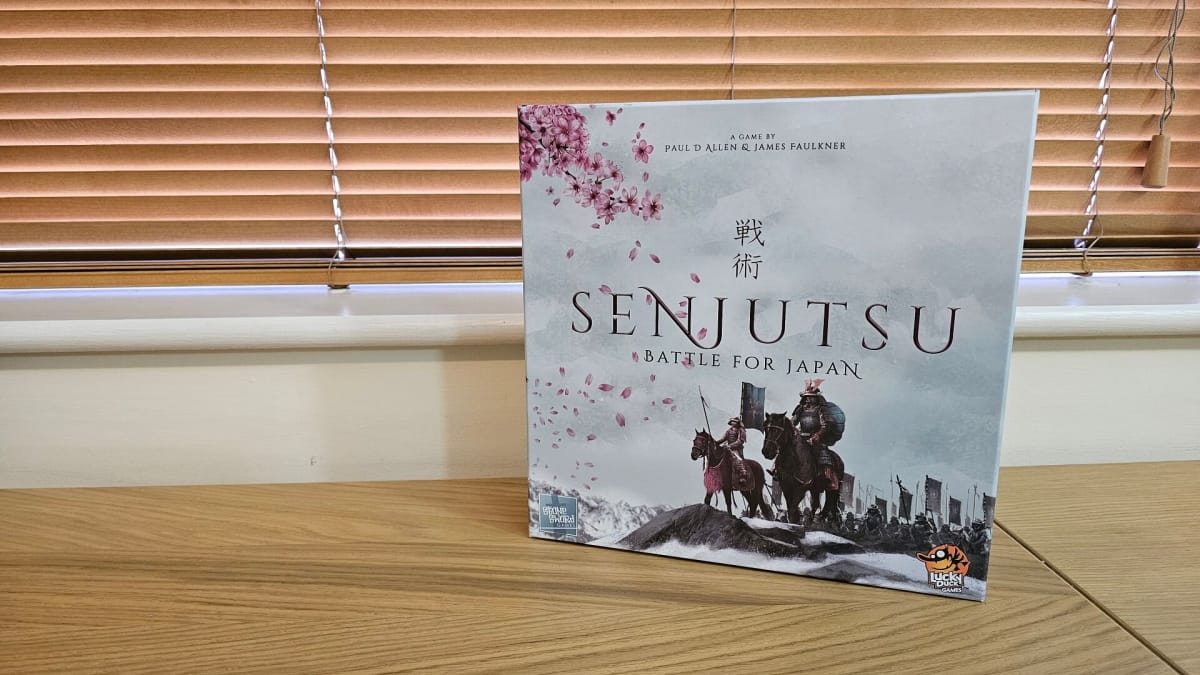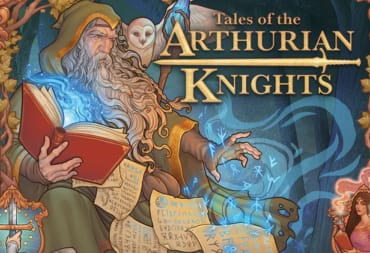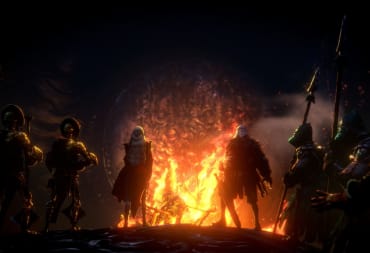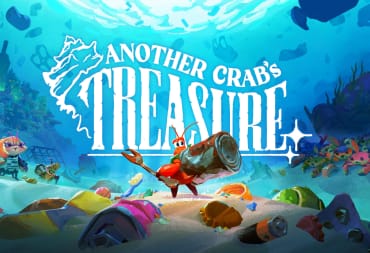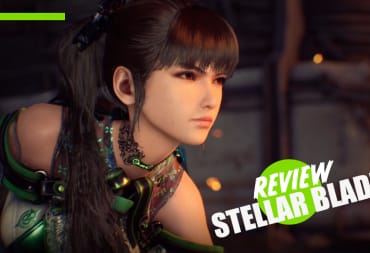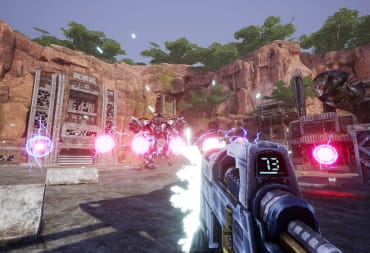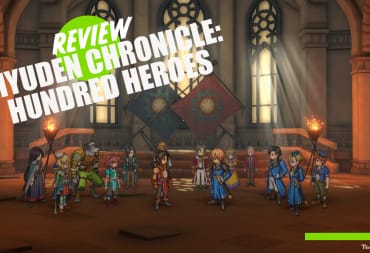The wind blew softly across the fields, bringing the scent of the nearby rice paddies to the two warriors facing each other across the bridge. Neither of them had wanted to step aside to allow the other to cross first, and so the faceoff had begun. The Master was older, wiser, and had spent more time on this earth to let the young warrior disrespect him. The Warrior was young, but his battlefield ability had raised him quickly through the ranks of his Daiymo's army and saw him much more senior than the old Master. Neither had drawn their weapons yet, but both held their scabbards in one hand, waiting, reading what their opponent's first move would be.
Several birds took flight from a nearby tree, something startling them? Or maybe their patience failed before those of the combatants. Both warriors simultaneously drew weapons, their blades leaving their sheaths in time to their forward step, taking them into striking range of each other. The time for reading their opponent now over. The time for battle had come.
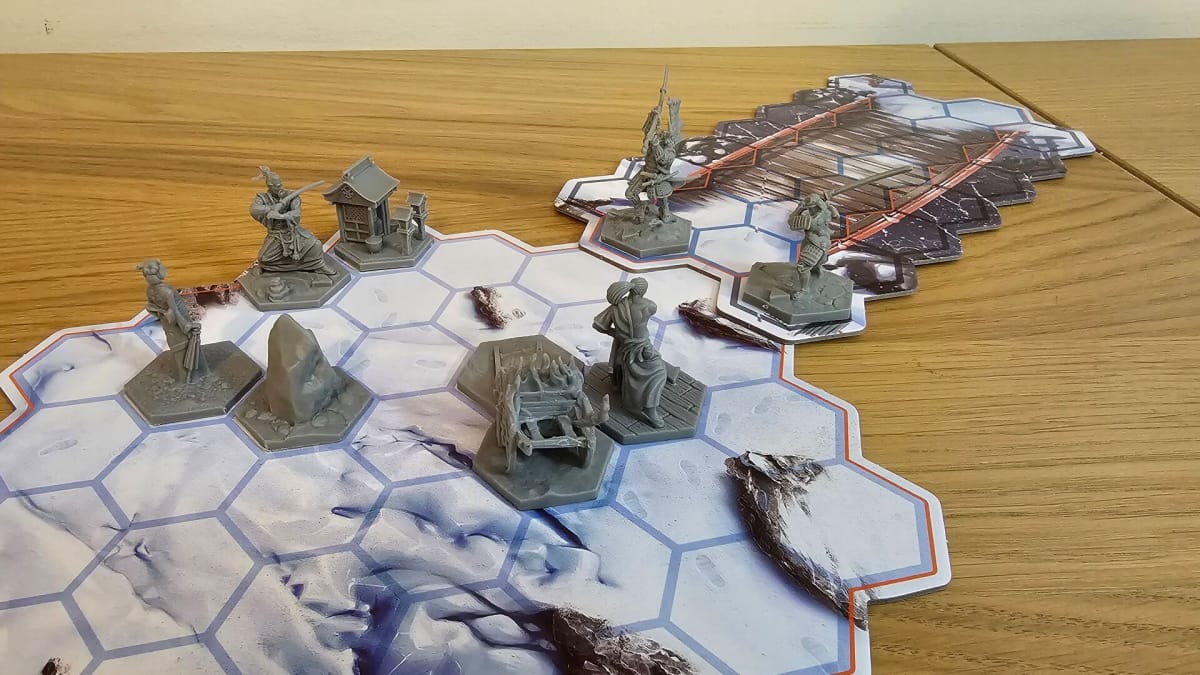
What Is Senjutsu: Battle For Japan?
Senjutsu: Battle For Japan is a board game for 1 to 4 players, that combines card game elements. Played on a hex map using miniatures, players select their warrior and build their decks using either preset decks for the characters, or their own design using the deck-building restrictions. Games can also be played solo and cooperatively, against single or multiple AI-controlled enemies.
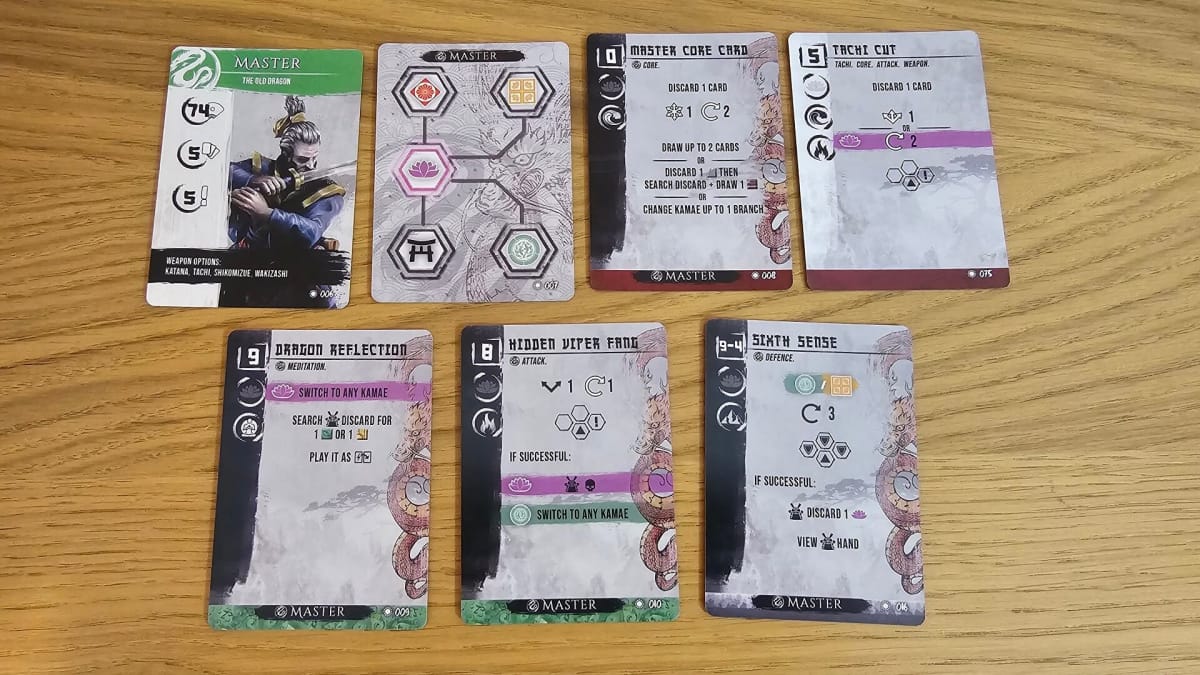
How Does Senjutsu: Battle For Japan Play?
After players have picked their Senjutsu: Battle For Japan characters and built their decks, the play area is set up using the beautifully detailed maps, and scenery added. Players then draw cards, from their deck, and add these cards to the weapon and ability card for their character, which they always have access to as they return to their hand after they've been used. Players then play the cards they wish to for that turn, and based on the initiative score for the card, they activate in that order, completing all or some of the elements on their cards, before the other players activate in initiative order.
There are several card types in Senjutsu: Battle for Japan and each card allows multiple actions. The main 3 subtypes for cards are Attack, Defense, and Meditation, with attack cards focusing on dealing damage, defense on blocking attacks, and meditation cards giving you other options like drawing cards, discarding cards, and searching the top of your deck for specific card types. Most, but not all cards allow you to move, on top of the other actions detailed on the card, and positioning is key for combat as attack and defense cards have specific hexes based on your character's miniature's facing that they apply to.
Each character also has a Kamae Tree, and cards allow you to move along this, opening up other options on cards if your Kamae Tree location matches the requirement on the card. The Kamae Tree, and cards, also allow you to gain focus, which can be spent and is sometimes a requirement to play certain cards.
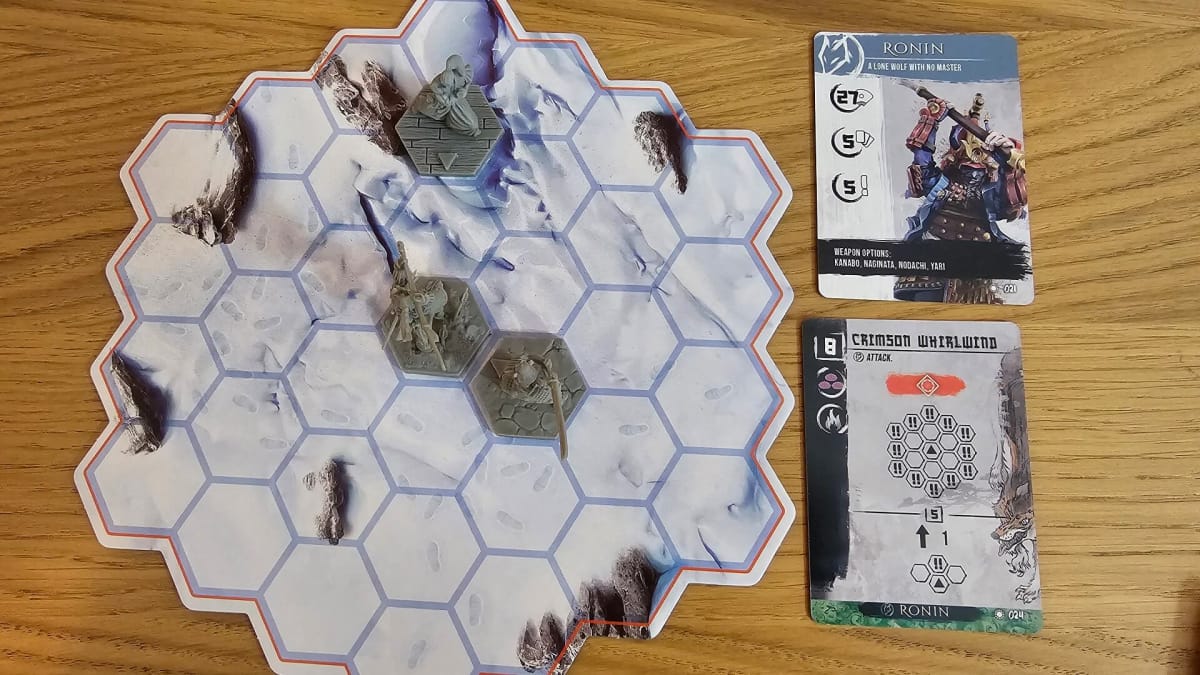
While looking complex, the rules are relatively simple as most of the information you need is on the cards, and you can look up the symbols and elements you need during play. The complexity comes from picking the card you think will give you the best outcome, while trying to read which card your opponent will play.
This can lead to some weird interactions, with characters striking in random directions, which would be very thematic when fighting ninja characters (a ninja character is available in an expansion pack), but when 2 experienced swordsmen are facing each other, and then they both turn their backs and attack in opposite directions, it can feel strange. Sometimes everything pays off, and you can execute a perfect block, reading your opponent's intent, but blocking does feel like a wasted turn sometimes.
The fixed weapon and character ability cards seek to mitigate the random card draws, always having solid options available, and there also also prepared cards that you can search for at the start of the game to go into your hand. Instant cards, which can be played immediately after certain conditions are met, or if it's an Instant Replacement, can also be used to switch the card you've played once you've seen your opponent's action, and these always feel very satisfying when they work.
Games are relatively short, even with 4 players, but that punchiness is let down by the randomness of the actions sometimes. The core Senjustsu box includes a fantastic solo and cooperative campaign to play through, with an illustrated comic that tells the tale as you play through the connected missions. The components throughout are also of great quality, gloriously illustrated and awesome miniatures for the heroes, and scenery, with tokens for some of the AI enemies.
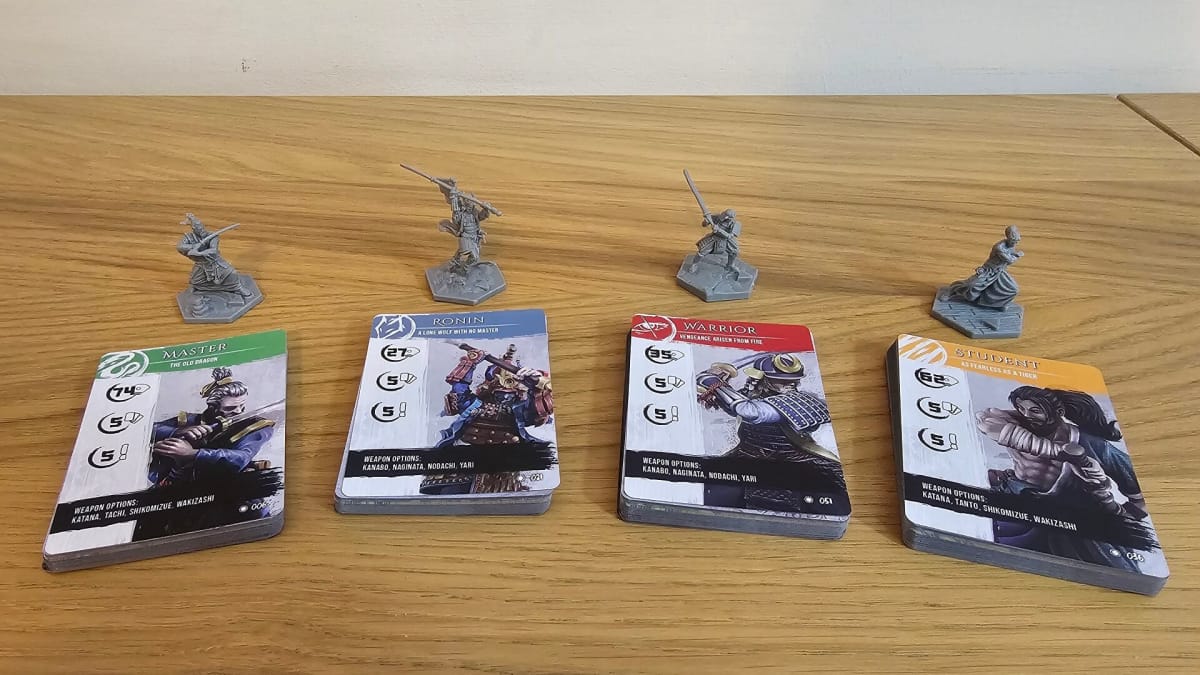
Who Can I Play As In Senjutsu: Battle For Japan?
The Senjutsu Battle For Japan core set includes the following playable characters:
- Master - Has some great attack and defense options threatening all surrounded hexes, making it difficult to get close.
- Ronin - Has access to the prepare card, Heavy Armour that reduces damage dealt to them, and also the longer-range bladed spear weapon, the Naginata.
- Warrior - Has some solid damage-dealing cards with good frontal attacks and also has the great Flaming Phoenix attack with an instant kill target hex.
- Student - The student has some very straightforward cards, but consistent damage dealing.
There are also several character packs that feature other characters, such as the Ninja, and famous samurai such as Musashi.
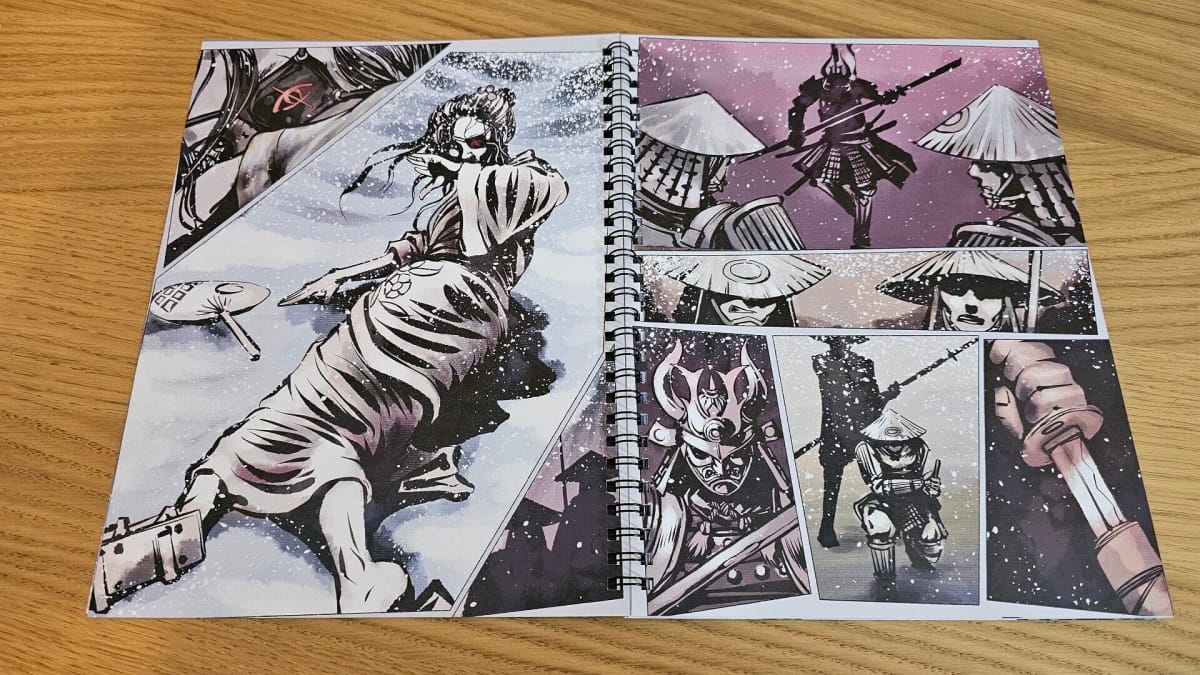
What Are Our Final Thoughts On Senjutsu: Battle For Japan?
Senjutsu Battle For Japan is a great game, more so if you're a fan of the setting, (which everyone will know I am from my obsession with Bushido and Legend of the 5 Rings). Despite the frustrations with some awkward plays, and occasionally unrewarding combat, it's still enjoyable. My frustration is that it feels like it could be an incredible system. It feels like the complexity of some of the cards, and the randomness of the draws in the 40-card decks, make it a little too random.
Games like Games Workshops Warhammer Underworlds, and Weta Workshops GKR: Heavy Hitters, while different games with different mechanics, blend the board/wargame and CCG elements perfectly, and hidden simultaneous movement games like Star Wars X-Wing have random, but fixed and readable movement options.
The blend of random options that come out of the 40 card decks take away the refinement that you get from those previously mentioned games. Senjutsu almost feels like it wants to be two different games, a samurai miniatures board game (like Okko Chronicles) and a samurai card battler (like the awesome Katana) it just hasn't found the sweet spot of blending the two.
Should I Buy Senjutsu: Battle For Japan?
If you love the Japanese and samurai theme, then Senjutsu will be a great purchase. if you're not that into the theme, and you're looking for a great board game with card game elements, then it might not be so much for you. It has some great mechanics, with awesome miniatures and components, and the solo and cooperative campaign is very well done, but the awkward interactions let it down sometimes.
The copy of Senjutsu: Battle For Japan used to produce this review was provided by Asmodee UK.
Review Summary
Have a tip, or want to point out something we missed? Leave a Comment or e-mail us at tips@techraptor.net
